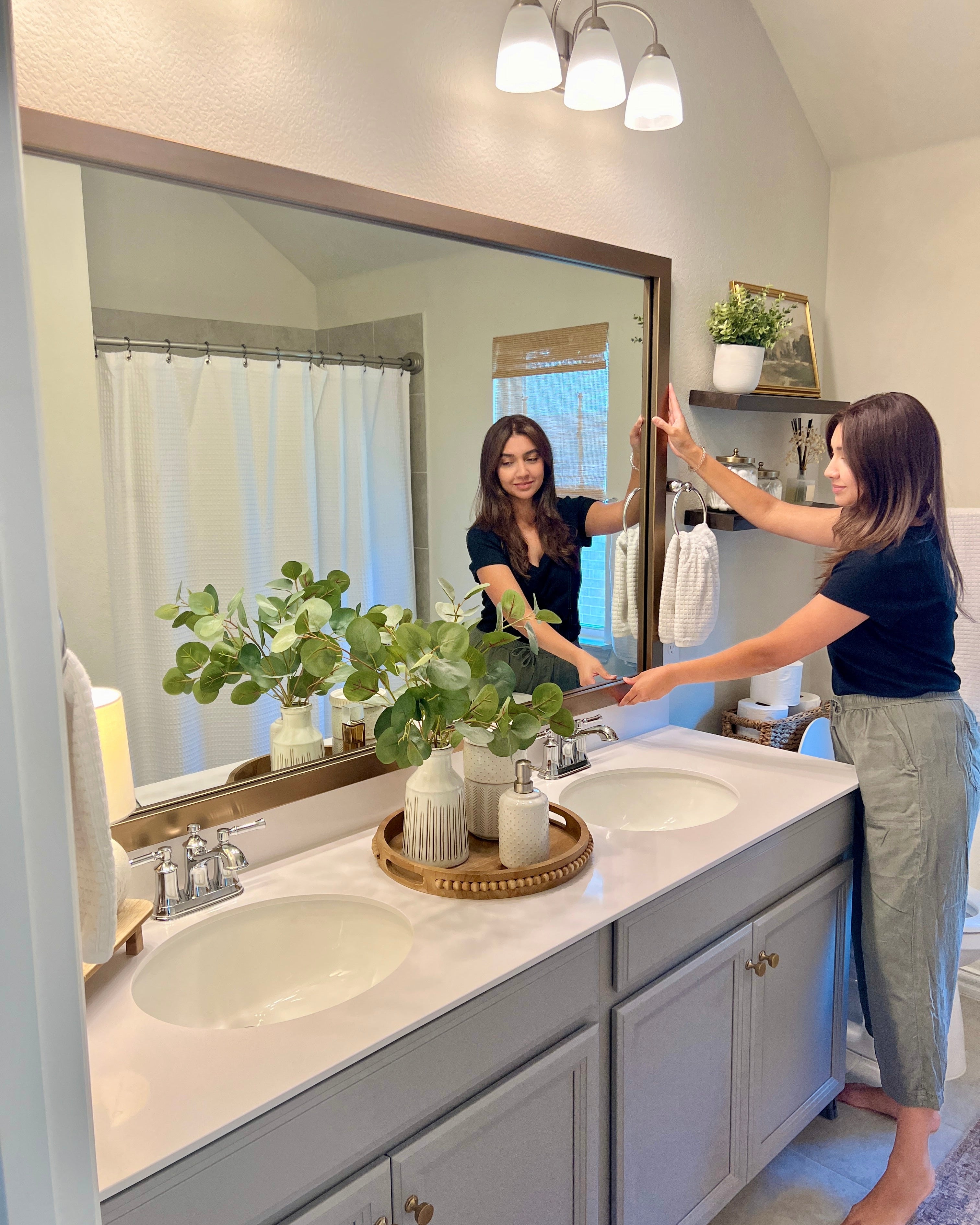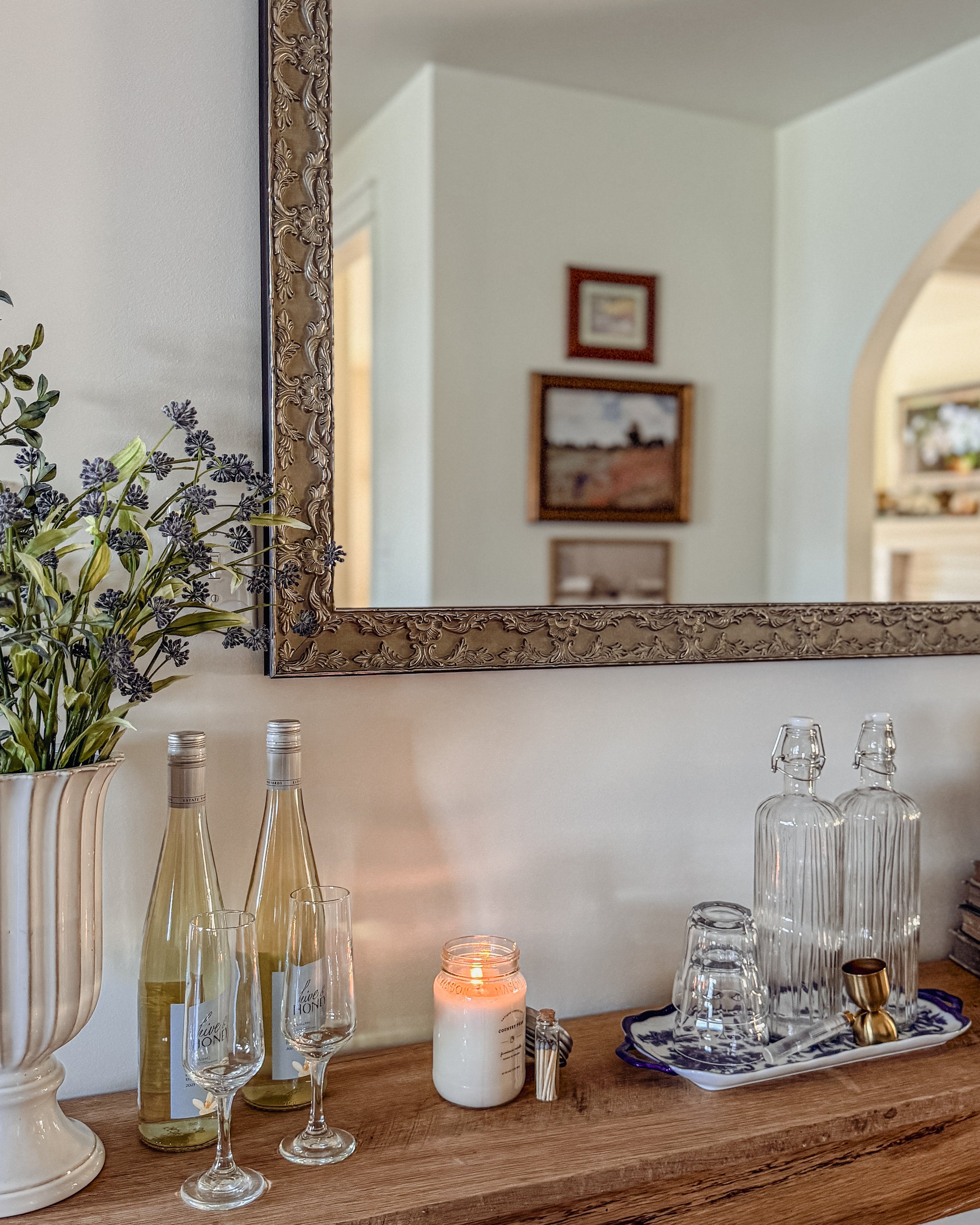Mirror, mirror on the wall … what is your history? The answer is surprisingly storied.
For much of history, mirrors were reserved for the extremely wealthy. These days, we walk around with compact mirrors in our pockets, check our lipstick in a rearview mirror, and have a framed mirror in several rooms of the house.
How did that happen? Let’s go back to the beginning.
“Mirror” is derived from the Latin mirari (“to wonder at, admire,”). That makes sense. But what is fascinating is that the earliest man-made mirrors weren’t what we think of as a mirror at all. As early as 6,000 and 8,000 years ago, mirrors were made from polished obsidian, a black volcanic stone.
Here’s the eerie part: These rudimentary mirrors were found in the graves of women in Turkey. Some archaeologists conclude that people during this time period believed mirrors had something to do with predicting the future or understanding the spirit world.
In fact, mirrors are also deeply woven into mythology and folklore in a wide range of cultures across the world.
For example:
The art of creating mirrors from metal doesn’t appear in history until roughly 4,000 years ago. In China, bronze and mixed metals were highly polished to shine on one side and have intricate inscriptions on the other side. Similar copper mirrors have been discovered from around the same time period in Mesopotamia and Egypt.
Mirrors were only owned by the rich and fabulous at that time, and were used for both utilitarian and religious purposes. Even now, mirror placement is important in the practice of feng sui.
(Be sure to check out our tips on how to position mirrors in your space!)
Over time, rounded glass mirrors became more readily available. Leonardo da Vinci introduced a secret code for spies that involved writing in a way that could only be read with a mirror reflection.
Fast forward to the 1400s: The first blown, polished, coated, flat glass mirror originated on the Italian island of Murano, located in the Venetian lagoon.
For several centuries, these Venetian mirrors were considered the absolute height of luxury. Of course, that made them incredibly desirable in places like Paris. So, in the 1660s, King Louis XIV had workers trying to replicate the ultra-secret formula of the Veneitan glass workers. The problem? His craftsmen were suddenly dying because of the exposure to dangerous heavy metals and toxins (like mercury).
Ultimately, the French caught on and figured out how to create the mirrors from coated glass — but not without scandal along the way (spies! murdered glassmakers! so much money!).
These mirrors were the closest iteration of the mirrors we’d use today — but at that point, they were still extremely expensive and a mark of wealth.
Over centuries, mirrors have shifted from magical symbols, to religious emblems, to objects of vanity, to practical use. Now, they’re an affordable way to add light and open up a space. And, you can even customize a framed mirror with just a few clicks on your keyboard. (No scandal required.)
Create your custom mirror now!
For much of history, mirrors were reserved for the extremely wealthy. These days, we walk around with compact mirrors in our pockets, check our lipstick in a rearview mirror, and have a framed mirror in several rooms of the house.
How did that happen? Let’s go back to the beginning.
“Mirror” is derived from the Latin mirari (“to wonder at, admire,”). That makes sense. But what is fascinating is that the earliest man-made mirrors weren’t what we think of as a mirror at all. As early as 6,000 and 8,000 years ago, mirrors were made from polished obsidian, a black volcanic stone.
Here’s the eerie part: These rudimentary mirrors were found in the graves of women in Turkey. Some archaeologists conclude that people during this time period believed mirrors had something to do with predicting the future or understanding the spirit world.
In fact, mirrors are also deeply woven into mythology and folklore in a wide range of cultures across the world.
For example:
- In ancient Greece, people used mirrors to “catch” the light of the moon, by which they were supposedly able to see visions of the future.
- The Olmec people viewed mirrors as religious items which were highly regarded for their ability to spark flames.
- Ancient Mayans buried their “elite” dead with mirrors. They were believed to hold mystical powers, and reflections served as a form of window into an alternate dimension.
The art of creating mirrors from metal doesn’t appear in history until roughly 4,000 years ago. In China, bronze and mixed metals were highly polished to shine on one side and have intricate inscriptions on the other side. Similar copper mirrors have been discovered from around the same time period in Mesopotamia and Egypt.
Mirrors were only owned by the rich and fabulous at that time, and were used for both utilitarian and religious purposes. Even now, mirror placement is important in the practice of feng sui.
(Be sure to check out our tips on how to position mirrors in your space!)
Over time, rounded glass mirrors became more readily available. Leonardo da Vinci introduced a secret code for spies that involved writing in a way that could only be read with a mirror reflection.
Fast forward to the 1400s: The first blown, polished, coated, flat glass mirror originated on the Italian island of Murano, located in the Venetian lagoon.
For several centuries, these Venetian mirrors were considered the absolute height of luxury. Of course, that made them incredibly desirable in places like Paris. So, in the 1660s, King Louis XIV had workers trying to replicate the ultra-secret formula of the Veneitan glass workers. The problem? His craftsmen were suddenly dying because of the exposure to dangerous heavy metals and toxins (like mercury).
Ultimately, the French caught on and figured out how to create the mirrors from coated glass — but not without scandal along the way (spies! murdered glassmakers! so much money!).
These mirrors were the closest iteration of the mirrors we’d use today — but at that point, they were still extremely expensive and a mark of wealth.
Over centuries, mirrors have shifted from magical symbols, to religious emblems, to objects of vanity, to practical use. Now, they’re an affordable way to add light and open up a space. And, you can even customize a framed mirror with just a few clicks on your keyboard. (No scandal required.)
Create your custom mirror now!



